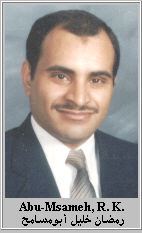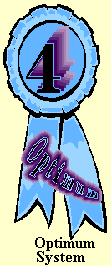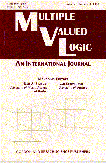|
| |
|

|
|
|
Mission
|
|
|
|

|
|
I designed this site to share my research
results on the field of
Multiple-Valued Logic with university faculties, researchers, engineers, designers, graduate students and interested people all over the world using the Internet.
Preface
|
|
Prioritors
will be the modern operators for digital systems designs. Never under
estimate them. Who said in 1849 that the operators founded by Boole will
take us to the current age of computers? After 89 years, people realized the
significance of Boole's operators by a smart man "Claude Shannon" in
1938.
How many years will it take to realize the significance of AOP and its prioritors?

Visitors since JAN 1, 2001
   
|
MVL
Researches
MVL
researches are aimed on developing new theoretical and practical means for
designing and analyzing devices in multiple valued logic systems that are more
sophisticated, more simpler, more economical, more powerful, more insightful,
and more appropriate than the current means.
Introduction
Binary logic is an area that
deals with the representation of data with two values ‘0’ and ‘1’. The
problem encountered with binary logic is the large number of bits that is needed
to represent data. This problem is reflected at the hardware level in two
well-known problems: pinout problem and interconnection problem. A solution to this problem was to increase
the number of its logical values and not limit them to two logical values.
This solution
gave rise to the
development of the field of Multiple-valued Logic
(MVL), which uses multiple logical values
to represent data. The number of the logical values is usually expected to be three or
more. For example, in a four-valued system, MVL uses four values to represent
data. If these values are to be numerical values, then 0,1,2, and 3 would be
used. In this way, MVL solves the pinout problem and it simplifies circuit
complexity of binary logic circuits. However, MVL designs digital circuits using
the traditional operations MIN, MAX, MV-NOT, and complementary
operators. The problem
encountered in this design, is the large number of traditional operations that is needed
to build up a digital circuit. This large number increases complexity
and interconnections of MVL circuits. The more operations a
MVL circuit needs, the more it gets complex and its interconnections get even
more complex. A solution to this
problem is to increase its basic operations of design and not limit them to
the traditional operators. This approach will give rise to a new field
called Multiple-Operational
Logic (MOL), which uses multiple-operations from unary and binary operations
to design digital circuits. Thus, MOL is aimed on introducing, into logical systems, a variety of new operators
that will make design more flexible than would be using just the MVL traditional
operators.
Where and how do
we get and select multiple-operations and introduce them into
logical systems? The question of "where" is a simple
one. In a z-radix digital system, there are zz unary
operations and zz2 binary operations and these operations
can be easily enumerated and selected. However, the question of "how" is a new challenging area.
In an effort to
answer the "how" question, I developed different means to achieve the
aforementioned purpose such as AOP, Degeneracy, and GTODE. AOP is an algebraic
system. Degeneracy and GTODE are theories which are used as tools that help in
answering the "how" question.
For the time being, I
will post information on AOP and later on I will post information on Degeneracy
and on GTODE.
| |


|